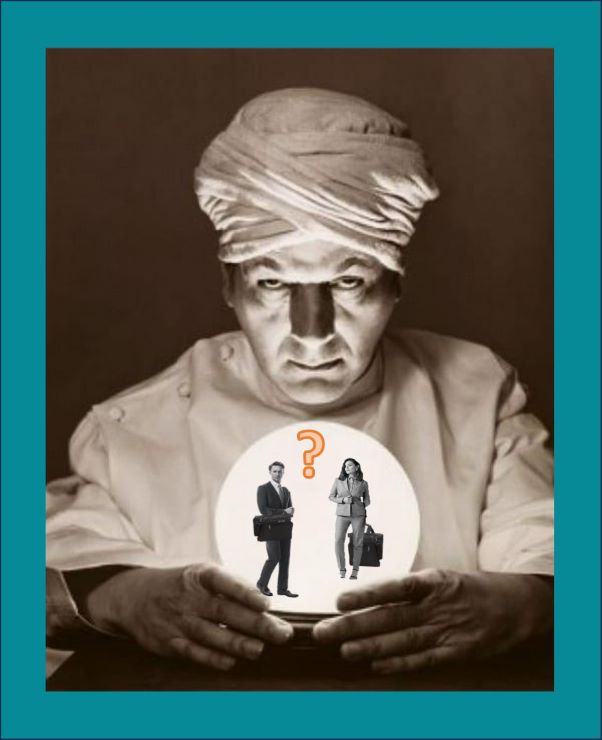The Company, CEO, Division Head, Shareholders, Workers, Humanity?
“Who is the client? Are you kidding me? It’s the person who hired us, the person who will pay us or not pay if you don’t do your job!”
The newbie who asked this wasn’t being a smart-aleck. The project manager met regularly with the division head and firmly believed that anyone who didn’t know that this person was the client was an idiot.
However, in the project kick-off, the CEO came and spoke to the combined team of client department heads and consultant team leads. The CEO nodded to the partner on the project and there was an obvious relationship there. The CEO mentioned in passing that the project had been suggested by the company’s largest shareholder who sat on the board. The CEO also talked about a solution that was good for the company and its workers.
I had been “around the block” by this point, and suggested that we map the “client system as we knew it.” The project manager wasn’t happy but agreed if we included the partner, while she was still in town.
In the session the partner explained that she had met with both the shareholder and the CEO, but that was not “common knowledge.” The partner would continue to check in with her contacts over the project, but “for the day-to-day the division head should be treated as the sole client.”
What the newbie (and perhaps others) learned is that this isn’t always a simple question.
Client Accountability
The client is always the person who is accountable for the results of the project. This is why the client is always an individual not a company, a division, or a group of any kind. Sure, presentations are often given to a leadership team and, depending on the culture, they may all have to sign off. Some may have more input than others; some may have to do more work as a result of your project. But there is usually one person who can say “Yes” when alb tl others say “No.”
In this case, the CEO and the board member viewed themselves as recommenders. The division head could have said “No” to their suggestion. He didn’t. He thought the project would help. Would he have hired a consultant on his own without prior approval? Probably not.
To the partner, the client was the shareholder; the CEO was critically important, but didn’t initiate the project. From the point of view of the project manager and therefore the project team the client was the division head.
From a consultant’s point of view the client has two roles, hiring us and benefiting from the results of our work i.e., positive change. Sometimes both these roles are invested in the same person, but not always.
Consultant Accountability
The partner made it clear that our job was to deliver results for the division head.
She also told us that this was a very collaborative culture so the division head wasn’t the only one we had to keep happy. The project manager facilitated building a client system map with individual consultant responsibility for individual client system influencers. This was a rudimentary map. It evolved as we learned more during the project. The consultant team had periodic meetings with two-minute relationship reports.
Each team member of the ensured that our work withs and the leadership team was never caught off guard, surprised by our findings.
This experience was at Gemini Consulting doing operations improvement work, process consulting. This approach is less common in content consulting.
I worked in some expert consulting environments (e.g., strategy projects) where findings were kept close to the vest to avoid people running off to fix things before all the data are in. The client focus in these situations was on the single client or a few on the senior leadership team.
The danger of a limited contact approach is that it often doesn’t build organizational support for implementation. The danger of the wider client system approach I described is that consultants can get co-opted into the politics of the organization.
Politics and Other Client System Conflict
Some people in organizations see consultants’ arrival as an opportunity to push their ideas. Some political players see the consultant as a way to gain power or advance at the expense of their “rivals.” Consultants must be vigilant to avoid being “played.”
Sometimes a member of the client system does something in their own interest not the company’s interest. Rarely this is illegal or immoral.
In business school, three students including me were given a small project by a professor. An aluminum can manufacturer wanted help with warehouse capacity. Should this firm buy additional peak warehouse capacity on contract or should they buy adequate warehouse space for the peaks and contract it out during non-peak periods.
In our initial analysis we looked at the peaks in early July and January. The warehouse problem was caused by unusual can returns from the largest customer, a soft drink manufacturer. The can maker was shipping twice the monthly average to this soft drink producer in December and June, only to accept half those cans back as returns January and July. This overloaded warehouse capacity in those peaks and increased warehousing of unused inventory over time.
We asked our client, the Controller, why that might be. This accountant slapped his forehead and paid us for work to date and cancelled the project. We were bummed out.
Two months later we received a note from the professor. The Controller wanted to talk. He came to campus and we met in the professors office, all sitting very nervously.
The Controller apologized for cancelling our work and thanked us. Apparently we had uncovered a fraud scheme between the manufacturing managers at the can and the soft drink plants. The can manager was paid a bonus twice a year on production shipped (June and December) and the soft drink manager was paid a bonus on inventory reduction in February and August. This had been going on for several years. Both managers had since been investigated and fired. Apparently the scheme was suggested to them by a consultant who worked for both firms. We had naively stumbled on this by asking “Why.”
What that consultant did was wrong and most consultants would never do anything like that, but keep focused on the goals of the project and confront or report destructive behavior. Being a consultant is a fiduciary responsibility.
Your Ideal Client
I learned about ideal clients early in my career because I started working for myself. In 1987, I became an independent consultant so I could be home more with my kids. I had some sub-contract work for my former employer, bur I had to develop local business and quickly. For the first time I thought about the kind of people who might hire me. I thought about my skills, matching them to opportunities in local companies. Over time I formulated my ideal client profile.
Those who hired me were often highly analytical, but aware they had some blind spots about people. They were also curious and wanted to be involved in my process. They had a strong sense of humor and especially didn’t mind laughing at themselves.
Your ideal client may be different than mine, but it’s worth thinking about even if you work for a big firm.. Your ideal client is someone who likes you, believes in you, and for whom you provide a unique value. It might be that you fill out their flat sides. It might be that they think you are really smart, caring, and/or competent. They key is they want to hire you.
During my first stint as an independent consultant, an old hand, Bob, said, “You only need five clients to feed you for the rest of your life. You’ll only work for two each year and that leaves two to three years between engagements.”
I could see how it worked for him. Later in my career I suspected that he was creating dependency. He wasn’t teaching his clients to outgrow him.
That is a particular bugaboo of mine. I think clients should learn to do things for themselves, actually not use consultants. (If you are a junior in a firm, don’t say this out loud. It’s heresy.)
It’s not that I didn’t work on multiple projects for the same clients over many years. I did, but I was doing different things. Sometimes a former client would call me from a new job and hire me for the work I’d done in his last firm. But even then, I tried to reinforce what that client had learned, and engaged him or her to teach others. This attitude did mean that I engaged in more client development than Bob did at his peak. In lean periods I met with former clients seeking referrals not work, though I didn’t turn down work if it came.
There were some times I turned down work even when I didn’t have other work to replace it. That was when I was asked to work again for a former client who created a toxic work environment for his people. It only happened two times over my entire career, but I felt good turning those engagements down. Life is too short to enable jerks.
In my view a client is someone you can help deliver results. Paraphrasing American psychologist, Carl Rogers,
- Help is defined by the recipient.
- Help that isn’t asked for, isn’t help; it’s interference.
- Helping someone requires “unconditional positive regard.” You can’t help someone you don’t like.
Rogers was talking to therapists, but his advice applies to the client-consultant-relationship. too. Scope carefully and make sure both parties respect each other and ensure that you remember who is the client.






Yet again, Alan. More good stuff. Funny, I recently have been going through the process of revisiting who is my “ideal” client. Someone I’m currently working with fits your description. And when I look back, others with whom I’ve worked also have many of the same qualities.
Anyway, good post.
Thanks.
Thanks, Bob Glad you liked it.
I appreciate your continued support of my writing.
A
Such good info in these nuggets of wisdom and experience. I hope there are some newbies out there who are reading, digesting and receiving the great mentoring in your writings. I remember you talking about “unconditional positive regard,” which I found to be so helpful. All three points are golden and foundational to delivering quality projects! I feel so fortunate to have worked with you and to have had access to your wisdom. I miss those days….Cheers to you my friend!
I was thinking of you a lot earlier today, Reina.
A young Jamaican teacher wrote me to ask how to display data for his students so they could work on improvement after a pre and post test. I wrote to him about Mager, and simpicity of display and said to myself -where is Reina when I need her.
I got my ‘developmental edit” on the first book back yesterday. It will require a complete restructuring and lots of rewrites -man did I need a whine.
Miss you too, friend. Thanks for your support of my writing.